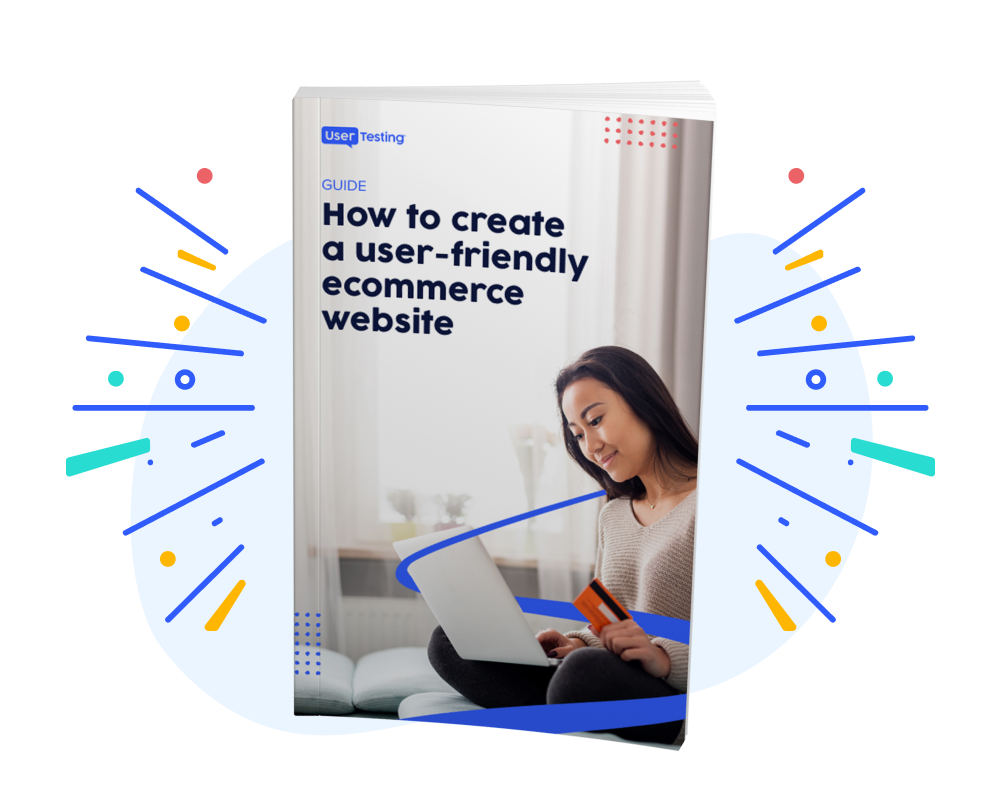Website checklist: Test and optimize your website before launch

Pre-launch tests enable you to evaluate whether your website can withstand real-world usage scenarios. They also help you assess if the new site is optimized for search engines and user experience. However, identifying what to do can be difficult, especially if you don’t know where to begin.
To help you test and optimize your website effectively, we’ve compiled a comprehensive website checklist you should use before going live.
1. Build an on-page SEO strategy
On-page SEO, or search engine optimization, refers to whatever you do on your website to rank better on result pages. Instead of paying for clicks on search results, you optimize your content with keywords to drive traffic to your website for free.
Below are common on-page optimization strategies:
Create high-quality content based on relevant keywords
“If Google algorithms updates like Panda and Penguin have shown us anything, it’s that quality [content] trumps everything else.”
- Neil Patel: Marketer, Owner of Ubersuggest, and founder of Neilpatel.com
When relevant, value-packed content aligns with the search intent of your target audience, that’s where the magic happens. Creating it involves comprehensive keyword research to reveal terms and topics that resonate with your customer’s pain points. Popular tools like Semrush and Ubersuggest will be helpful here.
After identifying target keywords for each web page, place them strategically in header tags (H1), first paragraph, and subheaders (H2, H3, H4, etc). That way, users and search engines will quickly understand what a page is about when you publish your site.
Furthermore, add the target terms to your body content so Google knows your webpage is relevant to a particular keyword.
Optimize title tags and meta descriptions with target keywords
A title tag is your web page title that appears on search results. Meta descriptions usually come below title tags to summarize what’s inside the page.
Using keywords in both title tags and meta descriptions can help increase clicks on search results by convincing prospects your website has the information they seek.
Ensure URL slugs are SEO-friendly
A URL slug is the last part of a web address that identifies a specific web page on your site. Take this URL as an example: usertesting.com/blog/ux-optimization-tips. Here, the URL slug is “UX-optimization-tips.”
Search engines use URL slugs to understand the content of a webpage. So, utilizing a webpage’s primary keyword as the URL slug is a best practice. Also, separate words with hyphens to make the slug readable for humans and ensure accurate interpretation by search engines.
2. Test and improve your website’s user experience (UX)
After building a website you’re proud of, test it with real users in a controlled environment before hitting “publish.” This involves:
Tree testing
In tree testing, use software to show contributors or testers a text-based version of your website—no navigation buttons or design elements. Then, ask them to show where they expect to find specific products, topics, or buttons on the site.
This test helps you identify a navigation structure that makes sense for users and best suits a website in your industry. It ensures users can easily and quickly find the information they need on your site. A tree testing tool by UserTesting provides actionable insights you can implement before you launch your website.
Usability testing
Usability testing involves asking people who match your customer profile to complete specific tasks on your website wireframes or visual representations of your pages' layout, structure, and functionality. Meanwhile, your UX team and developers refine the design based on how test users interact with the wireframes and the usability issues they encounter.
As a result, the final product is customer-centric and built right the first time to avoid expensive, time-consuming website redesigns in the future. Use technology like the UserTesting Human Insight Platform for usability testing.
3. Test for accessibility
“Inaccessible web content means that people with disabilities are denied equal access to information. An inaccessible website can exclude people just as much as steps at an entrance to a physical location.”
- U.S. Department of Justice
An accessible website ensures a smooth experience for your customers, even those with disabilities. Alt text provides image context for blind people who rely on assistive technology like screen readers.
Questions to ask when testing for accessibility include:
- Is there enough color contrast between the text and background to accommodate people with limited vision or color blindness?
- Are there captions for videos on your website to make the content accessible for those with hearing problems?
- Is your website accessible with both mouse and keyboard navigation?
- Can someone zoom in and out text on your website to meet their vision needs?
These are just a few questions you should ask when making your site more accessible. Use web accessibility evaluation tools like Wave to conduct a thorough test. They assess how accessible your site is, assign a score, and then provide recommendations on how to improve accessibility.
Certain jurisdictions, including the United States and Europe, legally require an accessible website. For this reason, it’s best to work with accessibility testing experts to ensure you comply with regulations in your area.
4. Set up 301 redirects
If you edit URL slugs or merge multiple web pages into one when redesigning your site, a 301 redirect comes in handy. This permanent redirection automatically sends users and search engines from an old URL that no longer works to the new ones that lead to particular content.
Without 301 redirects, users who click on old, broken links will get a 404 error message. Anyone who’s ever seen an “Oops, looks like the page you are looking for no longer exists” message knows that discovering a 404 error isn’t a great user experience. On the other hand, search engines might treat the old URLs as dead links, which can hurt your website’s ranking for relevant keywords.
How you create 301 redirects depends on your CMS or content management system. For instance, the steps for setting up redirects on a WordPress website differ from those of a Shopify e-commerce store.
5. Test your website on desktop and mobile devices
Google recommends a design that automatically adjusts website layout and elements to adapt to any device's screen size. If you only test your site on a desktop before launch, you might miss crucial layout issues on mobile screens. This can hurt user experience and negatively affect your ranking on search engines.
Most website builders allow you to preview and edit your website's appearance on mobile and desktop before going live. Ensure you switch to each mode and fix any areas where the layout appears distorted or elements overlap. Also, pay close attention to font sizes, content spacing, and images to make sure they are optimized for each screen size. Learn more about testing mobile usability.
6. Make sure your site is secure
A secure website uses HTTPS (Hypertext Transfer Protocol Secure). HTTPS is an encrypted communication method between your site and users’ browsers. It protects data, such as login credentials and user payment details, from cybercriminals intercepting it during transmission.
Because HTTPS is a Google ranking factor, you need it to become more visible in search results. If you don’t use it, some browsers, such as Google Chrome, warn users that your site is insecure.
The good news is that websites built on Wix and WordPress will automatically use HTTPS after going live. But if your web host doesn’t provide HTTPS by default, you must enable it manually. How?
Start by buying a Secure Sockets Layer (SSL) certificate, which encrypts data transmitted between your website and prospects’ browsers. Some certificate providers like Let’s Encrypt offer SSL for free. Next, install the certificate on your site through your web hosting provider to activate a secure connection.
7. Create a sitemap
Another item on your pre-launch website checklist is a sitemap. It lists all the web pages on your website that you want search engines to index and rank on result pages. It helps Google navigate your site more effectively.
If your new website only has a handful of pages (less than 50), manually creating a sitemap is manageable. But if your site is large and contains hundreds of URLs, you’ll need a generator like XML-Sitemaps.com to build a sitemap automatically. After that, submit the sitemap to Google via Search Console.
8. Conduct a stress test
A website stress test evaluates your site’s performance under high traffic. It’s an essential part of the website checklist because it helps identify and fix potential bottlenecks, weaknesses, and performance issues that could arise when many users access the site simultaneously.
However, not all websites require stress testing. It’s suitable if you expect your website to experience extreme traffic spikes on particular occasions. For instance, if you own an e-commerce site, you may get many visitors during promotions.
Technical tools like JMeter by Apache help you conduct a website stress test. During the test, they bombard your website with a controlled surge of simulated virtual users, allowing you to see how it would respond to traffic spikes in the real world. This helps you optimize your site to remain accessible and responsive during periods of high demand.
9. Optimize images for SEO
Websites like online stores heavily rely on photos to showcase their products to customers. That’s one of the ecommerce website basics, but using many images doesn’t have to be at the expense of ranking better on Google. Below are ways to optimize images for SEO:
Compress images for faster loading
You can compress images to minimize their file size without a noticeable reduction in image quality. Webpages with small images load faster than large photos, making it an SEO best practice. You can use image compression tools like TinyPNG.
Write descriptive alt text
Alt text helps search engines understand the content and context of images on your web pages. When crafting alt text, describe the photo (e.g., the product name, color, and material). You should also use relevant keywords to improve your chances of appearing on Google Images. Doing so can also help you rank better on results pages.
Leverage lazy loading
Lazy loading is a website optimization technique that prevents images on a webpage from loading at once. Instead, the photos on the user's screen are loaded first as someone scrolls down your page. This can significantly improve website performance, especially on slower connections.
Some content management systems, including Wix and WordPress, automatically deploy lazy loading attributes to images. You can use a plugin if you have to implement the technique manually, simplifying the process.
10. Review your website's CTAs
If you rely on your site to sell products, grow an email list through sign-ups, or compel users to take any action, refining your calls-to-action before launch is critical. Here are some tips for creating CTAs that convert:
- Use persuasive copy: The text in the CTA button should appeal to your prospect’s self-interest.
- Make your CTA action-oriented: The first word of your CTA should be a verb. For example, “Download now” and “Get 40% discount today” are action-oriented.
- Create a sense of urgency: The best CTAs show potential customers the time to act is now. For instance, “Last chance to save big: Order now” and “Hurry! Limited quantities available” show urgency.
11. Set up analytics
Analytics software like Google Analytics helps you gather details about user behavior on your website. It reveals what’s working out as expected, what isn’t, and things you can do to improve the overall performance.
Deploy analytics before publishing your new website so that you can track user behavior and site performance from the moment your site goes live.
But what if you are doing a website redesign and you had previously set up analytics? Ensure the old setup aligns with the current website configurations. For example, if you’ve made URL changes, verify that your analytics tracking codes are updated accordingly to accurately track data from the new URLs.
12. Build anticipation for your launch
Depending on the nature and scale of your website redesign, you might need to prepare your customers for the change several weeks in advance. For example, if the location of the button they always look for to access their account has changed, send them an email notifying them about the change before it happens so they know what to expect.
If the site is your product, and its functionality has changed, you’ll want to be more thorough in your communications. You’ll need to prepare a series of educational or instructional content weeks before launch. This may include creating how-to videos that walk customers through the new website features. You can then share the content via email and social media channels. Once your site is live, you can share the videos on your blog or even through a feature on your homepage.
Prepare to launch your website
Use the above website checklist to test and optimize your site before it goes live. Implementing the pre-launch tactics doesn’t have to be complicated. Leverage UserTesting’s professional services team to help you benchmark user experience and create a website that meets their needs.
Also, powerful technology like the UserTesting Human Insight Platform enables you to collect quality user feedback that you can utilize to streamline the UX experience before launching your site. It integrates seamlessly with popular website tools, such as Figma, InVision, and Adobe XD, which designers love and know how to use.
UserTesting Human Insight Platform empowers your web designer to make decisions quickly, reducing the time it takes to create and launch a tested, UX-optimized website.
This post was updated on April 5th, 2024.
What's next
As online stores grow rapidly, organizations must prioritize their digital customer experience to meet and exceed customers' changing buying habits and expectations. In this guide, we’ll go over how to construct an online shopping experience that’s user-friendly and built to stay competitive for years.






